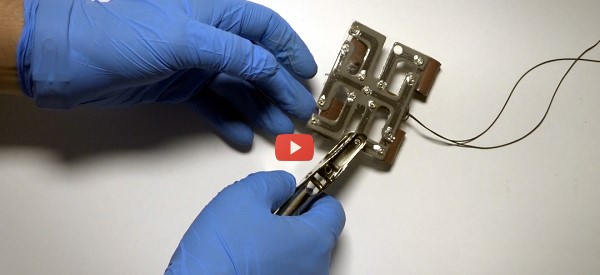Printed electronics are going to play an increasing role in wearable devices. The technology can be flexible, lightweight, and more durable than traditional rigid printed circuit boards. As we rely on devices to address health and medical issues, however, we need them to be able to take typical bumps and bruises in stride.
Researchers at Carnegie Mellon College of Engineering have come up with a novel material that could be an important component in future wearables. They have created a “soft-matter” composite material that conducts electricity, making it suitable for electronic circuits. It is made of liquid metal droplets mixed in a soft plastic. The result is a flexible material that can be stretched without changing its high conductivity. This alone would be interesting, but as they say on television, wait! There’s more! If the material gets physically damaged, the metal droplets rupture and connect with neighboring droplets to complete the electrical circuit. Slice through the conductor with a knife and it keeps working. Better yet, punch holes or cut out entire pieces of the material, and the circuit automatically is rerouted around the missing parts and continues to work. You have to watch the video above to get the full impact of this function; a researcher uses a hole punch to damage the circuits on a small robot, yet it keeps working. Imagine trying that with a traditional printed circuit board.
Materials research has been an important factor in moving wearable technology ahead. Advances such as this self-healing material will make it possible to create new devices for missions that would have seemed impossible a decade ago.


